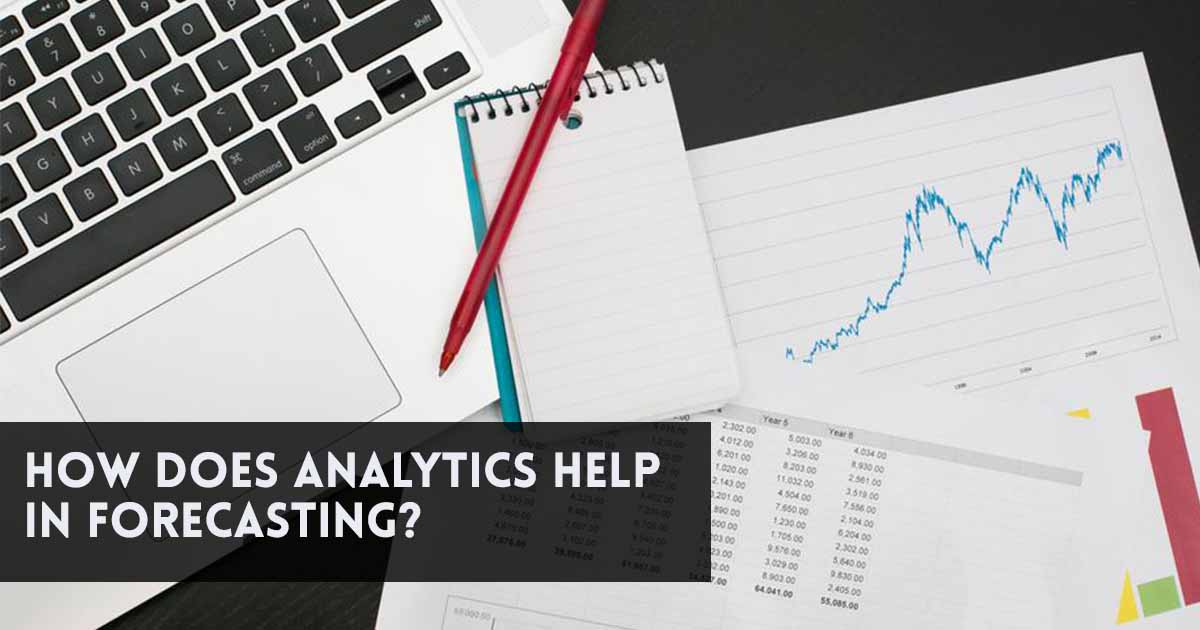When we refer to using analytics in forecasting, we are specifically referring to Predictive Analytics. So, we must know what predictive analytics is first.
Predictive analytics is used to make future estimations or forecasting of unknown events using techniques from statistics, mining data, ML, and AI. Based on historical data, predictive analytics with the use of data, statistical algorithms, and machine learning techniques identifies the likelihood of future results.
The most popular subjects of analytical trends among business intelligence professionals are predictive and prescriptive analytics, especially because Big Data has become the focal point of analytical processes and is leveraged, not just by the small and medium-sized enterprises. Industries use the method of anticipating a number of guests on a given night to adjust prices to maximize employment and increase revenue, while bankers utilize the technology to generate a credit score that includes all the relevant data needed to calculate the lending of the individual. This includes a number of guests they can expect on a given night’s day.
Working of Predictive Analytics
The method of making informed data-based forecasting is predictive analysis. In order to create a predictive model for forecasting future developments, it utilizes data along with analytics, statistics, and learning techniques. The word “predictive modeling” applies to the use of a mathematical or a machine-learning method to generate a detailed future prediction.
Forecasting is also a value that shows the possibility of a certain action or occurrence in the future. You will also correctly estimate the probability of an occurrence with a great deal of confidence with the right results.
Impact on Business
The predictive analysis models can be used to project marketing success on the basis of previous strategies, classify areas in which current and future consumers may enhance their awareness, and create personalized interactions. This agile market strategy is forward-looking and will flourish in 2020 and beyond. The positive thing is that it is not too difficult or too expensive to implement predictive analytic solutions.
Precise and timely Business Intelligence is a great differentiator for businesses to continue on. It is necessary to learn more than what happened and why you can better discover insights into future events.
Models of Predictive Analysis
The templates which help users to translate past and recent data into actionable insights and generate meaningful long-term outcomes are the basis of predictive analysis. Any predictive models usually include:
- Customer Lifetime Loyalty Model: Consumers who spend more often in goods and services will be listed.
- Plan for consumer segmentation: Community consumer focused on related features and purchasing behavior
- Predictive repair model: Include the probability of breaking down critical machinery.
- Plan for Quality Assurance: Identify and prevent flaws to reduce deceptions and unnecessary costs in providing goods or services to consumers.
Predictive analysis or forecasting requires various meanings, patterns, periods, and/or variations in the data into account to render predictions. This is a strong data-driven method to help the planning phase.
All you need to know about Business Analytics
Learn Business Analytics
| Top 7 Business Analytics University/ Colleges in India | Top 7 Training Institutes of Business Analytics |
| Top 7 Online Business Analytics Programs | Top 7 Certification Course of Business Analytics |
Learn Business Analytics with WAC
Other Skills in Demand
| Artificial Intelligence | Data Science |
| Digital Marketing | Business Analytics |
| Big Data | Internet of Things |
| Python Programming | Robotics & Embedded System |
| Android App Development | Machine Learning |

